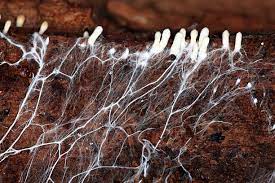This assignment is aimed at appreciating the important role definitions have in technical writing by defining a relatively complex term in three ways. Differentiating between the use of parenthetical, sentence and expanded definitions allows the writer to better tailor their work towards a targeted audience and producing more concise work. Each definition below is targeted towards a specific audience in mind. The first as a quick explanation in a formal report by those working in the field of biology, the second a definition that might be used on a pamphlet promoting the use of composting mushrooms in industrial settings, and the last definition used in a textbook targeted towards high school students who have little relevant knowledge.
Parenthetical definition:
Mycelium (thread-like branching mass of fungus)
Sentence definition:
Mycelium is the vegetative part of a fungus consisting of a network of fine white filaments. The network provides a system of nutrient extraction and is considered the main, unseen, part of a mushroom.
Expanded definition:
The word Mycelium comes from the Latin for “more than one” and was first coined in the early 1800’s in reference to the thread-like intertwining “roots” of a fungus. Though on-lookers may believe a mushroom, the fruiting reproductive body of fungi (the singular of fungus), consist of the majority of fungi they are, in fact, only a small part of the organism. Like an apple from an apple tree, the mushroom is the fruit of the fungus that allows it to spread through the process of reproduction.
Hidden from view, the mycelium is a fungi’s invisible network of white threads that in nature are often found under the soil. Fungi prefer cool, moist and shaded areas such as forests and wetlands, however, they also exist in the form of mold, mildew and slime that exist on the surfaces of living things turning a forgotten zucchini in the fridge into an unsightly furry mess.
Figure A.

As fungi do not use photosynthesis to translate energy from the sun into food as plants would they must instead rely on their network of mycelium to convert and extract food from their environments. In order to do so each stand of the mycelium, called a hypha (figure A.), releases an enzyme into its surroundings breaking down dead plants and animals so they can be absorbed by the fungus as food.

( The figure above shows the thread-like hyphae, plural of hypha, expanding into soil)
Through its life cycle, when it is time for fungus to reproduce spores are released from sprouting matured mushrooms that in turn germinate and produce their own stands of hypha. These stands can become large complicated overlapping structures with potentially millions of individual hypha, collectively they are known as the mycelium. In some woodland species these networks may spread so much they make up a large percentage of the surface soil and, while not competing directly with plants for food, many species of fungi have evolved to create a symbiosis with other plant species playing a crucial role in breaking down and clearing away organic matter in woodland ecosystems.
References:
Islam M.R. et al. “Morphology and Mechanics of Fungal Mycelium”. Scientific Reports, 2017. https://doi.org/10.1038/s41598-017-13295-2
“Mycelium”. Dictionary of Biology, Oxford University Press, 2019. https://www.oxfordreference.com/view/10.1093/acref/9780198821489.001.0001/acref-9780198821489-e-2881
Trautmann, Nancy, and Elaina Olynciw. “Compost Microorganisms”. Cornell University, http://compost.css.cornell.edu/microorg.html
Leave a Reply